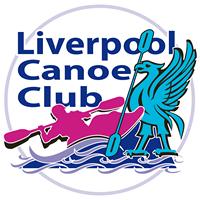Karl Leungs organised this weekend jaunt down the mighty river Severn. We paddled from Shrewsbury Weir to Ironbridge on the first day enjoying a well earned stop at the Riverside Inn. We made the 24 miles to Ironbridge just as dark fell on us. Jackson rapids were run in twilight and head torches were needed to navigate to the boat inn and Coalport YHA were we either camped or enjoyed to luxury of the YHA.
The next day we paddled the beautiful valley down to Bridgnorth aided by the swift flowing current. It was great to see such a variety of boats on the river (opens, sea kayaks, inland tourers, white water boats)
Paddlers comments
Great paddling weekend and thanks to all for the support for the slower paddler and especially Gareth for taking Aleksander on board. Not sure my shoulders will be the same after getting the Burn to the end though! Great YHA venue.
Thanks a bunch for organising a fun weekend paddling down the River Severn from Shrewsbury to Bridgnorth including a run through Jackfield Rapids just as the light was fading on Saturday night. A great time was had by all and I really enjoyed meeting some new club members. Sign me and Carole up on the next trip please Karl.
Hi everyone, I will like to say a big thank you to everyone for turning up this weekend for the Severn trip. Hope you are all home and safe, recuperating after the arduous 24 miles paddling on Saturday I know it was a tough one but you all completed the journey, helping each other as we paddle down to Coalport.
Fantastic trip, on a beautiful river, thank you for organising, perfect timings and a good night at the YHA in Coalport. I have this picture – always helps to carry a spare boat.
Shrewsbury Weir to Riverside Inn
 The village of Uffington was once connected to Monkmoor by ferry. Behind Uffington is the flat-topped Haughmond Hill with its Forestry Commission plantations. The Shrewsbury to Birmingham Railway Bridge passes over the site of the old Haughmond Abbey fish weir. This is a good example of an extended fish weir, and was the last in operation in Shropshire. Water can be shallow here, so you need to pick your way through stones. This is also the site where Preston Boats rope-ferry used to operate.
The village of Uffington was once connected to Monkmoor by ferry. Behind Uffington is the flat-topped Haughmond Hill with its Forestry Commission plantations. The Shrewsbury to Birmingham Railway Bridge passes over the site of the old Haughmond Abbey fish weir. This is a good example of an extended fish weir, and was the last in operation in Shropshire. Water can be shallow here, so you need to pick your way through stones. This is also the site where Preston Boats rope-ferry used to operate.
Note the two bridges next to each other at Atcham. John Gwynn, the Shrewsbury architect who also designed English Bridge, built the old bridge in 1776. The current road bridge was built in the 1920s.
At the Tern / Severn confluence the remains of a lock wall are visible. The River Tern runs through the grounds of Attingham Hall and Deer Park, now owned by the National Trust. Attingham Hall was designed by George Stuart in 1783 – 5 for Noel Hill, the first Lord Berwick.
The Severn over the next hundred yards becomes wider and shallower. St Eata’s Church, standing on the banks of the Severn, was built in the 11th century. It is the only church in Britain dedicated to the Celtic St Eata, who was consecrated by the Bishop of Lindisfarne in AD678.
Riverside Inn to Ironbridge
The river flows through a plain and meanders over a sandy bed with views of the Wrekin and Leighton Hall. At Cressage, it has been claimed that the Pope’s emissary, St Augustine, preached to the Welsh bishop under the Cressage Oak (originally Christ’s Oak, from which the village name derives) which stood for centuries on the site now occupied by the war memorial.
Buildwas Village is on the left and the ruins of Buildwas Abbey on the right. The Abbey is now an English Heritage property and was founded in 1135 as a daughter house of Furness Abbey in Cumbria. The Abbey owned many of the surrounding farms and had its own ironworks. The power station is situated on the right bank. The Albert Edward Railway Bridge, built by John Fowler in 1863, today carries coal trains fuelling the power station. The Dale End Riverside Park is just after the Ironbridge Rowing Club.
Ironbridge to Bridgnorth
It was at Coalbrookdale in 1709 that Abraham Darby discovered that coke could be used instead of charcoal for smelting iron. This small discovery sparked a revolution that changed the world. Iron could now be made cheaply in large quantities, instead of being dependent on the slow charcoal production process. For a time, the Ironbridge Gorge was the world’s foremost industrial centre.
It was Darby’s grandson who constructed the world’s first bridge made from iron. Cast in 1779, it still spans the Severn at Ironbridge. The industrial scars have healed and the gorge is green once more. The industrial relics have been transformed into a collection of museums, and Ironbridge is now a UNESCO-designated World Heritage Site. From the busy Ironbridge Gorge the river enters into quiet and peaceful Apley Forge. This stretch of the river is surrounded by woodland where Kingfishers are regularly seen. The white suspension bridge was built in 1900 to link Apley Park with Linley Station on the Severn Valley Railway. In 912 King Alfred’s daughter, Ethelfled, built Bridgnorth as a fortified township above the Severn. Bridgnorth grew in importance and was a strategic port and crossing place.
